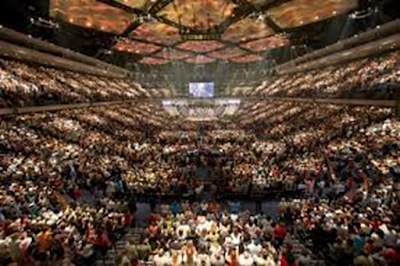“America Pulls Back from Values that Once Defined It”
This week, the Wall Street Journal reported on the results of a poll which found that the values that once helped define the national character are in decline. Patriotism, religious faith, having children, hard work, and community involvement are among the traits that just don’t matter as much today.
Some highlights – or “low”-lights:
- 38% said patriotism was very important compared
to 70% in 1998
- 39% said religion was very important compared
to 62% in 1998
- In four years, those saying tolerance for
others is very important has dropped from 80% to 58%
- Only 23% of adults under 30 say having
children is important
- The only priority that has grown in
importance is money – up from 31% to 43% since 1998
As Yogi Berra said, “The future ain’t what it used to be…”
What’s going on and what can be done? While polarization, the economy, instability all over the world, and other factors play into the decline of values, values don’t remain values without dedication, commitment and communicating what’s important with each other and the next generation.
This Shabbat, the Torah reading opens with the words “Tzav et Aharon v’et banav – Command Aaron and his sons.” Rashi comments that this verse is meant to imply that the command should be performed diligently and with passion now and by future generations. Rabbi Shimon Schwab, the religious leader of the Washington Heights Breuer’s community, asked why does a verse specifically relating to Aaron and his sons become the springboard for instilling passion in future generations?
Without passion, the key values will not be instilled in the next generation.
When reading of the declining of appreciation for key values, I said sadly to myself, “This makes sense.” If we don’t demonstrate our commitment to God, country, family, and community and talk about their importance with the next generation, why will they care? So much of contemporary society directs the individual to focus inward. We walk around with Air pods listening to our own little world looking at the screens of our own reality. Why should we value the importance of things bigger than ourselves?
Rashi picked up on this. Do we want what’s important to us in creating a purposeful, meaningful world to be appreciated and practiced by the next generation? We’ll have to be passionate about them ourselves and talk about them to our children. We need to speak about the importance of faith and Torah. We need to talk about Israel – even with those with whom we disagree. We can acknowledge that times change and the experience of the next generation – be they Millennials or Gen-Z – won’t be exactly the same as ours, but Judaism always remains at the core of who we are.
We need to model our inner Eliyahu HaNavi.
Next week, we’ll pour a cup of wine and invite Elijah the Prophet inside. Even for those who don’t actually see him (don’t be ashamed! 😊), Eliyahu remains a symbol of the values which matter. We need to understand his message of Judaism remaining relevant from one generation to the next.
When the Talmud poses a question which is not resolved, the conclusion is sometimes “teiku,” which stands for tishbi yetareitz kushyot v’abayot – We will only resolve the issue when Eliyahu the Tishbite provides an answer in messianic times. Why should we turn to Eliyahu in messianic times? Thanks to the promised resurrection of the dead, won’t there be other Jewish greats to ask – maybe Moshe or one of the Talmudic giants?
Rabbi Levi Yitzchak of Berditchev explains that it is Eliyahu who remains more relevant than any other Jewish hero. Moshe died and went to the next world, never to be heard from since. Eliyahu ascended to heaven in a whirlwind. (II Kings 2:11) Eliyahu never died, and he remains “in touch” with us until today. He “attends” every bris ceremony, at which we give him a special chair. He makes an appearance on Saturday nights and is part of the traditional liturgy recited by many. And Eliyahu makes it to every Seder on Pesach. Eliyahu can answer the questions better than anyone else since he has maintained the greatest connection with Jews throughout history.
Eliyahu bridges the generation gap. Eliyahu represents the ability of Judaism to remain relevant from one generation to the next.
וְהֵשִׁיב לֵב־אָבוֹת עַל־בָּנִים וְלֵב בָּנִים עַל־אֲבוֹתָם
Eliyahu will reconcile parents with children and children with their parents…(Malachi 3:24)
Clearly, the new generation is seeing things differently than before. Eliyahu reminds us – and encourages us – to bridge that gap. Parents should understand that the next generation is being brought up in a vastly changed world with very different technological and social norms. Children should appreciate the value of being the next chapter in a story that goes back thousands of years and assume responsibility for carrying the traditions forward.
When we open our doors for Eliyahu, we may not see him physically, but we encounter something far more meaningful: an approach to redeeming the Jewish present and ensuring the future.



